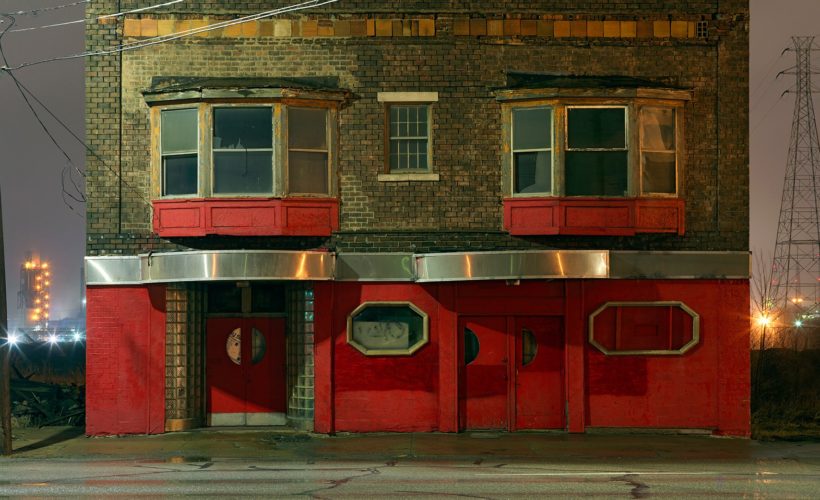Photographer Dave Jordano grew up and attended art school in Detroit, developing a lifelong attachment to the scrappy city. Although he moved to Chicago in the late 1970s, Jordano returned frequently to his hometown, witnessing its long, slow decline as deindustrialization devastated the city and affluent residents fled to the suburbs. From a high of 1.8 million people in 1950, Detroit has fallen to a population of about 700,000, 83 percent of them black and half living on less than $25,000 a year.
Recently, Detroit has been experiencing something of a revival, with millennials relocating to Motor City to take advantage of cheap housing and a growing art scene. A bevy of craft beer joints, Lululemon outlets, and vegan eateries have, inevitably, sprouted up to serve these creative-class transplants. But venture beyond these gentrified precincts and you’ll find the same overgrown lots, deteriorating homes, and ramshackle shops familiar to many Americans from news coverage of the city.
These are the areas Jordano seeks out. He’s been photographing Detroit seriously since 2010, publishing a book of his street photography in 2015. The following year he shot a series focusing on the city’s ubiquitous marijuana dispensaries. For his latest book, A Detroit Nocturne, he focused on the city after dark.
“You always hear these stories about Detroit at night,” Jordano says. “‘Don’t go out, it’s too dangerous.’ And I said, ‘Well, let me see for myself.'”
What Jordano found, at least on weeknights, was a surprisingly peaceful city that largely shuts down after 8 pm. “When you take half the population away, it leaves a lot of empty space,” the photographer points out. There was so little traffic that he was often able to set up his tripod in the middle of the street. In large swaths of Detroit there isn’t a chain store to be found, leaving residents dependent on the same type of mom-and-pop stores they’ve been patronizing for decades.
Many of these small businesses, which often advertise themselves with colorful, hand-painted signs, are the subjects of Jordano’s photographs. “The signs are very indicative of the culture there,” Jordano explains. “People don’t have a lot of money, so the best way for them to advertise their business is to get a gallon of paint and make a sign. They’re everywhere, and it creates a unique identity for the city.”
Some observers have interpreted Jordano’s photographs as documents of decay, a reading he vigorously rejects. “I don’t like ruin porn—it’s been done to death,” he says. “The images I show aren’t devoid of people, there just aren’t people in the photographs.” Even if they appear closed, most of Jordano’s buildings exhibit signs of life such as a lighted room or a freshly painted sign.
Where some visitors see urban blight, Jordano sees a proud city of resourceful survivors. The city recently spent $185 million to install tens of thousands of new LED streetlights in areas that had been dark for years. Everyone Jordano met loved the new lights, and they feature prominently in his photographs. “The morale is really high,” he says. “Everyone has a cap or a jacket with ‘Detroit’ written on it. There’s just an amazing camaraderie that you don’t see anywhere else.”
More Great WIRED Stories
- A new era of Frankensoftware is upon us
- The hustlers fueling cryptocurrency’s marketing machine
- This elite Microsoft hacker team keeps Windows PCs safe
- The brilliant vigilance of Seattle’s gargantuan new tunnel
- PHOTO ESSAY: Inside the Arctic Circle, golden hour has nothing on golden day
- Get even more of our inside scoops with our weekly Backchannel newsletter
Source:WIRED











